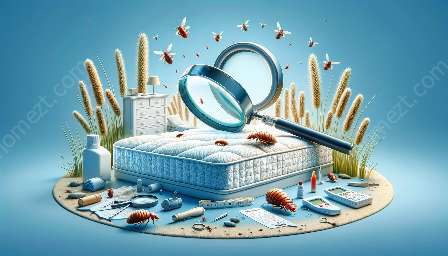Bed bugs are notorious pests that can infest homes, causing distress and discomfort. Understanding bed bug behavior is crucial for effective pest control. In this comprehensive guide, we will explore the behavior patterns of bed bugs, their habitats, feeding habits, and provide valuable insights into controlling these pesky intruders.
What are Bed Bugs?
Bed bugs are small, reddish-brown insects that feed on the blood of humans and animals. They are nocturnal creatures, meaning they are most active at night. Despite their name, bed bugs are not exclusively found in beds. They can also infest upholstery, clothing, and other furniture.
Bed Bug Behavior
Understanding the behavior of bed bugs is essential for effective pest control. Bed bugs are highly elusive and often hide in cracks and crevices during the day, making them difficult to detect. They are skilled hitchhikers and can travel from place to place by attaching themselves to luggage, clothing, and other personal belongings.
Bed bugs feed by inserting their mouthparts into the skin of their host, typically while the host is asleep. They use anesthetic saliva to numb the area, making their feeding process painless and often unnoticed. After feeding, bed bugs retreat to their hiding places to digest the blood meal, leaving behind itchy welts and potential allergic reactions on the host's skin.
Reproduction and Life Cycle
Bed bugs reproduce rapidly, with females laying hundreds of eggs in their lifetime. The eggs are tiny and difficult to spot, making early detection a challenge. Once hatched, bed bug nymphs go through several molting stages before reaching adulthood. Understanding their life cycle is crucial for targeting all stages of development during pest control efforts.
Bed Bug Habitats
Bed bugs are adaptable creatures and can thrive in various environments. They are commonly found in dwellings with high occupant turnover, such as hotels, apartments, and dormitories. Cluttered spaces provide numerous hiding spots for bed bugs, making it easier for them to establish infestations.
In addition to homes and accommodations, bed bugs can infest public transportation, theaters, and office buildings. Their ability to hide in tiny cracks and crevices allows them to remain undetected until infestations become severe.
Pest Control for Bed Bugs
Effective pest control for bed bugs requires a multifaceted approach. Integrated pest management techniques that combine non-chemical and chemical methods are often recommended for dealing with bed bug infestations. Non-chemical methods include thorough cleaning, vacuuming, and heat treatments, while chemical options may involve the use of insecticides specifically formulated for bed bug control.
Professional Pest Control Services
Due to the resilience and hidden nature of bed bugs, professional pest control services are often necessary to eradicate infestations completely. Pest management professionals have the knowledge, expertise, and specialized equipment to locate and treat bed bug infestations effectively.
Conclusion
Understanding bed bug behavior is essential for successful pest control. By learning about their habits, habitats, and life cycle, individuals and pest control professionals can develop targeted strategies to eliminate bed bug infestations and prevent future occurrences. Combining knowledge of bed bug behavior with effective pest control methods can help create healthier, more comfortable living environments.






















